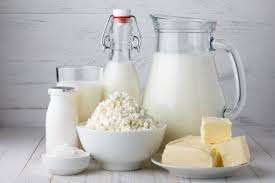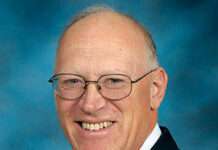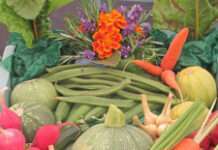Dairy cow numbers increase but growth limited by lack of processing facilities
EMPORIA, Kan. – Kansas is well known for beef production, but the state’s dairy industry has grown significantly over the past 20 years and Kansas State University’s Mike Brouk expects that trend to continue.
Brouk, an animal science professor and K-State Research and Extension dairy specialist, said there are twice as many dairy cows in Kansas now as there were in 1998, and that the state has been adding 3,000 to 4,000 per year.
The trend started years ago when some large dairies relocated from other states because of Kansas’ readily-available feed, land and generally favorable climate, according to a USDA report.
“We’re milking more cows, but we’re also getting more milk per cow,” said Brouk, who provided an update for Kansas agriculture extension agents last month.
Milk production per cow is up about 50% from where it was in 1998, reaching an average of 23,429 pounds per cow per year in 2019 from 16,037 pounds in 1998. Brouk largely credits Kansas producers and their management practices for the increases.
He works with some producers who have started using robots or are considering switching to robotic milking but noted that startup costs are an obstacle to the adoption of the technology. The equipment investment for robotic milking is about $2,500 per cow compared with $250 per cow using conventional equipment.
Currently, five farms in Kansas are milking robotically.
Kansas’ overall milk production is about three times what it was in 1998 because of the increase in cow numbers and more milk production per cow. That puts the state at No. 16 nationally in total milk production and No. 14 in production per cow.
One of the downsides in the industry is consolidation. Brouk said there has been a 2.57 fold decrease in the number of dairy farms in the state, but added that many of the remaining farms are growing. Some have locations in other states.
“We produce more milk in Kansas than what we can consume as a population,” he added.
Americans typically consume about 600 pounds of milk or milk products each year. Since Kansas currently produces about twice that much or 1.13 million pounds, about half goes to other states – often southeast states where production per capita is less or is exported to other countries.
Brouk said dairy consumption has increased over the past 20 years, but “how we consume dairy products has changed drastically during that time. We’ve had a decrease in fluid milk sales of about 42% but an increase in cheese sales of about 170%. It’s not all about fluid milk anymore.”
As in other agriculture sectors, dairy exports to other countries have become increasingly important and have continued to increase even this year during the coronavirus pandemic. Mexico is the largest buyer of U.S. dairy products, but southeast Asia and Canada are also key markets.
Brouk said total dairy product consumption is up about 20% from where it was in 1975.
“We have a very healthy market, healthy demand for our products and that’s a good thing for our industry,” he said.
He noted, however, that even with robust milk production and demand, dairy farmers’ margins are tight because of feed costs. A measure called the milk-feed price ratio indicates that dairy producers’ profit margins are growing tighter.
“That means any uptick in feed prices without a corresponding move up in milk prices will make margins even tighter,” Brouk said.
FOR PRINT PUBLICATIONS: Links used in this article
Video/powerpoint presentation, www.asi.k-state.edu/research-and-extension/beef/agent-resources/DairyUpdate.mp4
Dairy Report from 2019 Ag Growth Summit, https://agriculture.ks.gov/docs/default-source/ag-growth-summit/january-2018-documents/dairy-sector.pdf?sfvrsn=12
K State Research and Extension is a short name for the Kansas State University Agricultural Experiment Station and Cooperative Extension Service, a program designed to generate and distribute useful knowledge for the well being of Kansans. Supported by county, state, federal and private funds, the program has county extension offices, experiment fields, area extension offices and regional research centers statewide. Its headquarters is on the K State campus in Manhattan. For more information, visit www.ksre.ksu.edu. K-State Research and Extension is an equal opportunity provider and employer.
For more information:
Micheal Brouk
785-565-3434
[email protected]
Written by:
Mary Lou Peter
[email protected]




